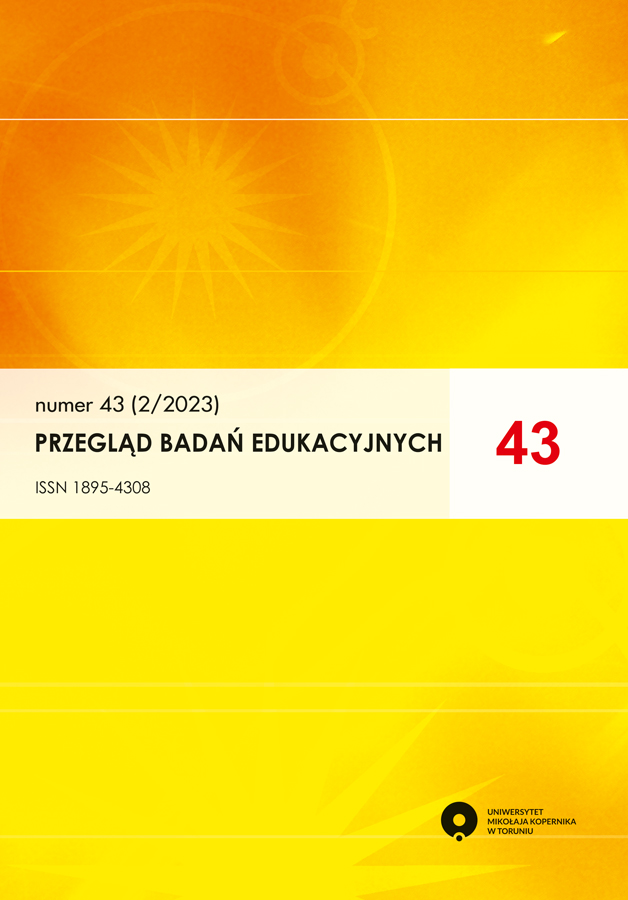Snowball Sampling and Its Non-Trivial Nature
DOI:
https://doi.org/10.12775/PBE.2023.030Abstract
Snowball sampling (SS) is one of the popular methods of sampling in social research. The history of the development and implementation of this sampling model sheds light on the conditions of the evolution of the idea of sampling from hidden or hard-to-reach human populations. The seemingly uncomplicated procedure is the source of the method's popularity but also leads to its caricatured forms. This article presents selected elements of the theoretical basis of snowball sampling in its original version and its role in the development of theory related to sampling hard-to-reach populations based on chains of relationships. Special attention is given to the issue of sample representativeness and the conditions for determining the sample size obtained through snowball sampling. The aim of the presentation is to highlight the rational possibilities that the snowball sampling model offers for observational studies on education.
References
Baltar, F., & Brunet, I. (2012). Social Research 2.0: Virtual Snowball Sampling Method Using Facebook. Internet Research, 22(1), 55–74.
Brewer, K., & Gregoire, T.G. (2009). Introduction to Survey Sampling. In: D. Pfeffermann, & C.R. Rao (Eds.), Sample Surveys: Design, Methods and Applications. Vol. 29A (pp. 9–37). Amsterdam: Elsevier.
Cialdini, R.B. (2009). Influence: Science and Practice. Boston: Allyn & Bacon.
Coleman, J.S. (1958–1959). Relational Analysis: The Study of Social Organizations with Survey Methods. Human Organization, 17(4), 28–36.
Deaux, E., & Callaghan, J.W. (1985). Key Informant Versus Self-Report Estimates of Health Behaviour. Evaluation Review, 9(3), 365–368.
Dorofeev, S., & Grant, P. (2006). Statistics For Real-Life Sample Surveys. Non-Simple-Random Samples and Weighted Data. Cambridge: Cambridge University Press.
Erickson, B.H. (1979). Some Problems of Inference From Chain Data. Sociological Methodology, 10, 276–303, doi: 10.2307/270774.
Flick, U. (2009). An Introduction to Qualitative Research. London: SAGE.
Frank, O., & Snijders, T. (1994). Estimating the Size of Hidden Populations Using Snowball Sampling. Journal of Official Statistics, 10(1), 53–67.
Glaser, B., & Strauss, A. (1999). The Discovery of Grounded Theory: Strategies for Qualitative Research. New York: Routledge.
Goodman, L.A. (1961). Snowball Sampling. The Annals of Mathematical Statistics, 32, 148–170.
Granovetter, M. (1976). Network Sampling: Some First Steps. American Journal of Sociology, 81(6), 1287–1303.
Guba, E.G. (1981). Criteria for Assessing the Trustworthiness of Naturalistic Inquiries. Educational Communication and Technology, 29(2), 75–91.
Handcock, M.S., & Gile, K.J. (2011). Comment: On the Concept of Snowball Sampling. Sociological Methodology, 41(1), 367–371.
Heckathorn, D.D. (1997). Respondent-Driven Sampling: A New Approach to the Study of Hidden Populations. Social Problems, 44(2), 174–199.
Heckathorn, D.D., & Cameron, C.J. (2017). Network Sampling: From Snowball and Multiplicity To Respondent-Driven Sampling. Annual Review of Sociology, 43, 101–119, doi: 10.1146/annurev-soc-060116-053556.
Klovdahl, A.S. (1977). Social Networks in an Urban Area: First Canberra Study. Australian and New Zealand Journal of Sociology, 13, 169–175.
Lohr, S.L. (2010). Sampling: Design and Analysis. Boston: Brooks/Cole, Cengage Learning.
Morse, J.M., Barrett, M., Mayan, M., Olson, K., & Spiers, J. (2002). Verification Strategies for Establishing Reliability and Validity in Qualitative Research. International Journal of Qualitative Methods, 1(2), 13–22, doi: 10.1177/16094069020010.
Patton, M.Q. (2018). Expert Sampling. In: B.B. Frey (Ed.), The SAGE Encyclopedia of Educational Research, Measurement, and Evaluation (p. 648). Los Angeles: SAGE.
Raymond, H.F., Chen, Y.H., & McFarland, W. (2019). “Starfish Sampling”: A Novel, Hybrid Approach To Recruiting Hidden Populations. Journal of Urban Health, 96, 55–62, doi: 10.1007/s11524-018-0316-9.
Spreen, M. (1992). Rare Populations, Hidden Populations, and Link-Tracing Designs: What and Why? Bulletin of Sociological Methodology, 36, 34–58.
Stueve, A., O’Donnell, L.N., Duran, R., San Doval, A., & Blome, J. (2001). Time-Space Sampling in Minority Communities: Results with Young Latino Men Who Have Sex with Men. American Journal of Public Health, 91(6), 922–926, doi: 10.2105/ajph.91.6.922.
TenHouten, W.D., Stern, J., & TenHouten, D. (1971). Political Leadership in Poor Communities: Applications of Two Sampling Methodologies. Urban Affairs Annual
Review, 5, 215–254.
Watters, J.K., & Biernacki, P. (1989). Targeted Sampling: Options for the Study of
Hidden Populations. Social Problems, 36(4), 416–430.
Downloads
Published
How to Cite
Issue
Section
License
Copyright (c) 2024 Sławomir Pasikowski

This work is licensed under a Creative Commons Attribution-NoDerivatives 4.0 International License.
Stats
Number of views and downloads: 2996
Number of citations: 0



